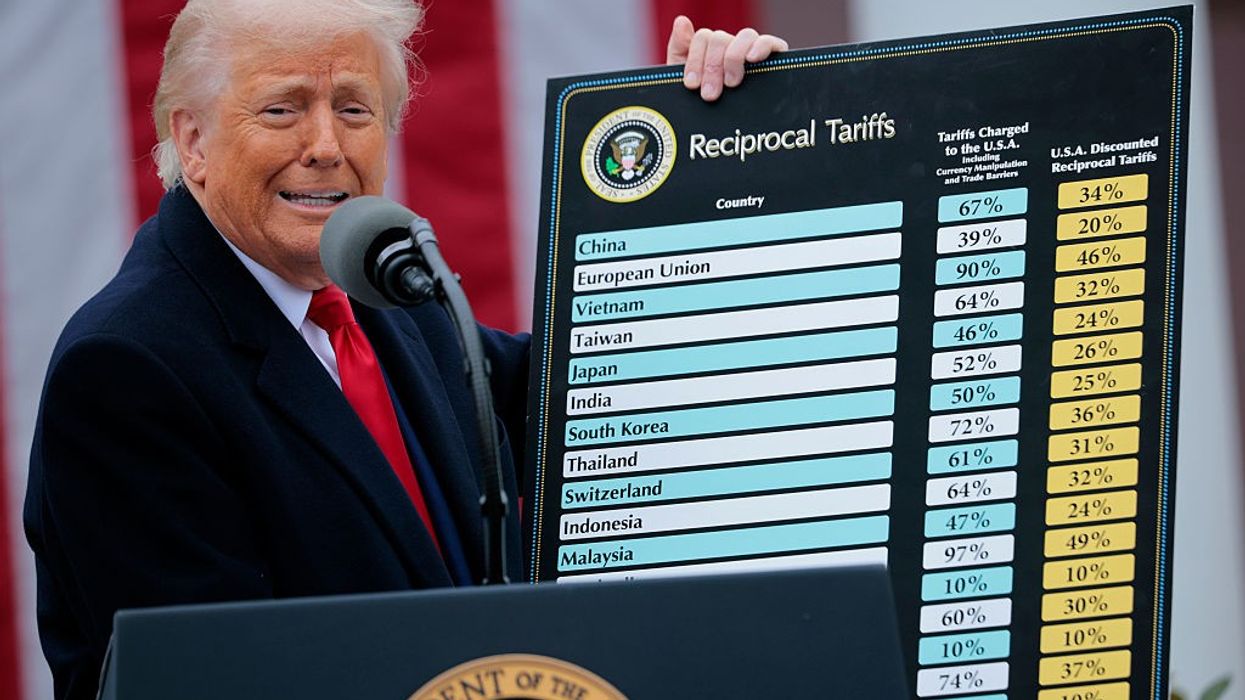Economists Call BS on 'Crazy' Trump Tariff Dividend Promise
"If the goal is relief for Americans, just get rid of the tariffs," explained one economist.
As poll numbers on his handling of the US economy have continued to sink in recent weeks, President Donald Trump has floated sending Americans a $2,000 check that he has claimed will be funded with revenue collected from his tariffs on imported products.
However, economist Dean Baker of the Center for Economic and Policy Research (CEPR) on Tuesday crunched some numbers and found that Trump's proposed tariff "dividend" simply doesn't add up.
In particular, Baker found that the revenue being generated by the tariffs is less than half of the total cost of sending nearly every US citizen a $2,000 check.
"At $2,000 a piece it would come to $600 billion, more than twice what Trump is collecting from us with his import taxes," Baker explained. "Since he's already $330 billion short, how can Trump think he has money to pay down the national debt?"
Baker declared Trump's tariff math "crazy," and then speculated that the president sincerely believes the false claims he's been making about securing $18 trillion in investments from foreign countries. What's more, Baker said that it appears that no one on the president's economic policy team wants to tell him that this belief is purely delusional.
"People like Treasury Secretary Scott Bessent or National Economic Adviser Kevin Hassett may not be brilliant intellects, but they know that Trump does not have trillions of dollars from foreign countries to play with, and that we are still running deficits that would ordinarily be considered very large," he said. "But they are too scared of Donald Trump to explain this to him."
Erica York, vice president of federal tax policy at the Tax Foundation, said in an interview with CNN published on Tuesday that Trump could also reignite inflation by sending out $2,000 checks to everyone, as this would likely increase demand for goods and services without a corresponding increase in supply.
"All of this is exactly the wrong recipe if you want to get inflation under control and make things feel more affordable," she said.
York also said in a separate interview with the Associated Press that it makes little sense to cut Americans a check when one of the main reasons they're paying more for so many products has been the president's tariffs.
"If the goal is relief for Americans, just get rid of the tariffs," she said.
Michael Pearce, deputy chief US economist at Oxford Economics, echoed York's concern about the dividend checks worsening inflation, and he told CNN that the risk with Trump's plan is "if you add a stimulus check on top of a tax cut refund, you're going to overheat the economy."
University of Michigan economist Justin Wolfers was even more blunt in his take on Trump's tariff dividend idea, which he labeled, "insane, unfair, pointless and dumb."
"If tariffs are making Americans poorer," Wolfers told CNN, "the simplest and fairest way to stop that is not to tariff."
